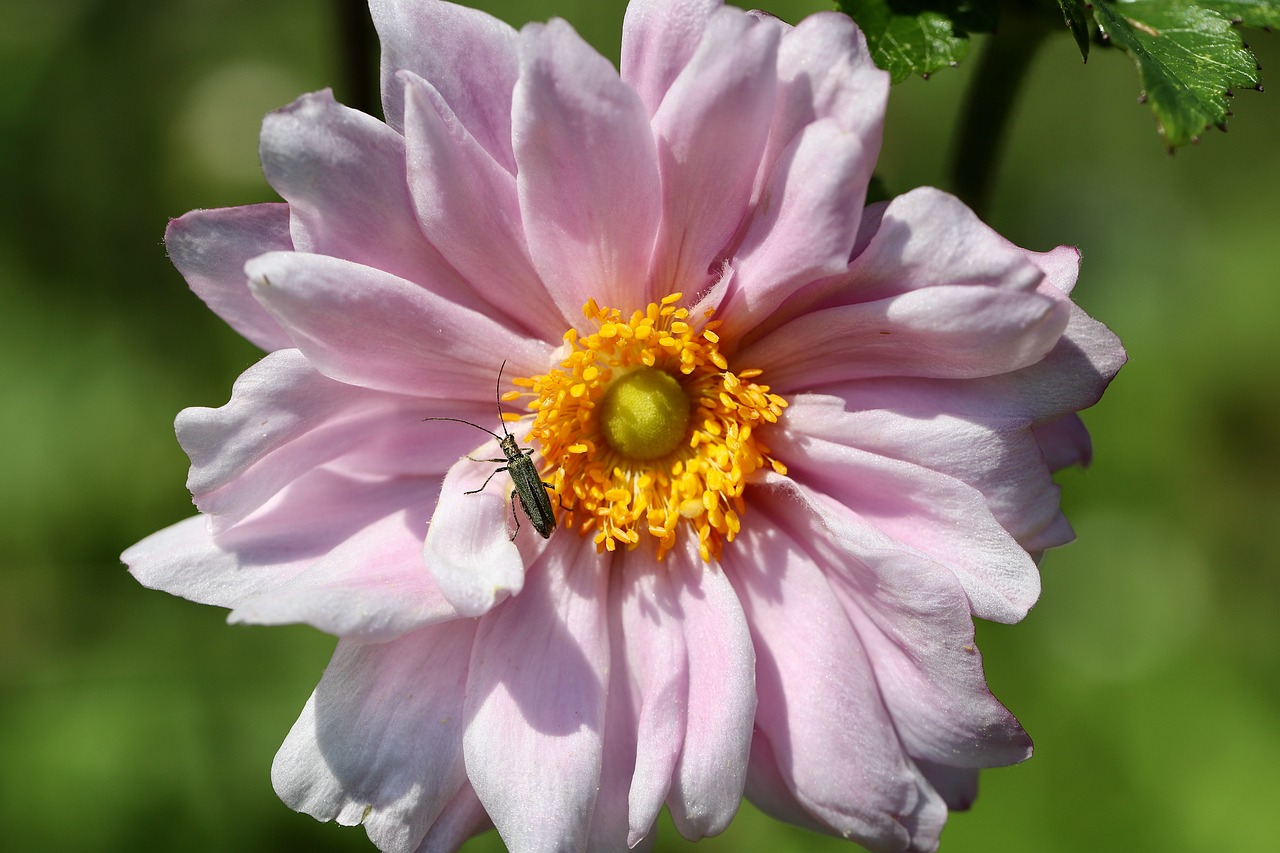
The History and Culture of Orchids
The history and culture of orchids is a captivating journey that spans across ancient civilizations to the modern-day. These delicate and exquisite flowers have held a significant place in human society for centuries, leaving an indelible mark on art, religion, medicine, and more.
Ancient civilizations revered orchids for their beauty and symbolism. In ancient Greece, orchids were associated with fertility and were often depicted in artwork and sculptures. In China, orchids were believed to bring good luck and were highly valued for their medicinal properties. Native American tribes used orchids in traditional medicine and rituals.
During the age of exploration, adventurers and botanists embarked on daring expeditions to discover rare and exotic orchid species. These explorations led to the discovery of countless new varieties, fueling a growing fascination with orchids around the world. The 19th century witnessed an orchid craze, with collectors and enthusiasts competing to acquire the most prized and elusive specimens.
The Victorian era saw orchids become a symbol of social status and luxury. Orchid shows and exhibitions became popular, showcasing the rarest and most beautiful orchids. Orchids also played a role in fashion, inspiring intricate designs and patterns. Orchids found their way into literature and art, inspiring poets, writers, and artists to capture their elegance and allure.
Today, orchids continue to captivate people’s hearts and minds. With advancements in cultivation techniques such as hybridization and tissue culture, orchids have become more accessible to enthusiasts and hobbyists. They are popular choices for indoor gardening and are widely appreciated for their unique beauty and variety.
The history and culture of orchids is a testament to the enduring fascination and appreciation for these extraordinary flowers. From their ancient origins to their modern-day cultivation, orchids have left an everlasting impression on human society, weaving their way into our hearts and culture.
Ancient Origins
Ancient civilizations held a deep reverence for orchids, recognizing their beauty and significance in various aspects of life. In art, orchids were often depicted as symbols of elegance, grace, and fertility. Their delicate petals and vibrant colors inspired artists to capture their essence on canvases and sculptures.
In religion, orchids were associated with gods and goddesses, believed to possess magical powers and healing properties. Orchid blooms were offered as sacred offerings in temples and used in rituals to invoke blessings and protection. The ancient Greeks even named the orchid after their god of love and beauty, Aphrodite.
Furthermore, orchids played a vital role in traditional medicine. Ancient civilizations believed that orchids had the power to cure ailments and enhance vitality. Orchid extracts were used in potions and remedies to treat various conditions, ranging from digestive disorders to respiratory ailments.
Overall, orchids held immense cultural significance in ancient civilizations, permeating art, religion, and medicine. Their allure and symbolism continue to captivate us to this day, reminding us of the enduring beauty and rich history of these remarkable flowers.
Discovery and Exploration
Discovery and Exploration: Uncovering the stories of adventurers and botanists who traveled the world in search of rare and exotic orchid species. Throughout history, intrepid explorers and passionate botanists have embarked on daring expeditions to discover and document the incredible diversity of orchids found in various corners of the globe.
These adventurers braved treacherous terrains, endured harsh climates, and risked their lives in pursuit of these captivating flowers. Their journeys took them to remote jungles, towering mountains, and unexplored islands, where they encountered orchids in their natural habitats.
One such explorer was John Lindley, a renowned botanist who traveled to South America in the early 19th century. Lindley’s expeditions led to the discovery of numerous orchid species, including the iconic Cattleya, which became a symbol of luxury and beauty.
Another notable figure in orchid exploration was Frederick Sander, a German-born orchid collector who ventured into the depths of Southeast Asia. Sander’s expeditions yielded a treasure trove of rare orchids, many of which had never been seen before. His discoveries fueled the growing fascination with orchids during the Victorian era.
These explorers not only brought back new orchid species but also valuable knowledge about their habitats, growing conditions, and unique characteristics. Their efforts paved the way for the cultivation and conservation of orchids, ensuring their preservation for future generations to appreciate and admire.
Orchid Mania
During the 19th century, a phenomenon known as Orchid Mania took hold, captivating the hearts and wallets of collectors and enthusiasts alike. This craze was fueled by a fervent desire to possess the most coveted and elusive orchid species. Orchid hunters ventured to remote corners of the world, risking life and limb in their quest for these botanical treasures.
Collectors would go to great lengths to acquire rare orchids, often paying exorbitant prices for a single plant. Orchid auctions became fierce battlegrounds, with bidders vying for the chance to own these prized specimens. The allure of these delicate flowers went beyond their beauty; they symbolized wealth, status, and refinement.
| Characteristics of Orchid Mania: |
|
Orchid Mania had a significant impact on society, shaping fashion trends and influencing horticulture practices. It sparked a wave of hybridization experiments as enthusiasts sought to create new and unique orchid varieties. The obsession with orchids extended to literature and art, inspiring poets, writers, and artists to incorporate these captivating flowers into their works.
Although the Orchid Mania eventually waned, its legacy lives on. The fervor for orchids in the 19th century laid the foundation for modern orchid cultivation and the continued fascination with these exquisite blooms.
The Role of Orchids in Society
The Victorian era was a time of great fascination with orchids, and their influence extended beyond the realm of botany. Orchids played a significant role in shaping society, particularly in the areas of fashion, horticulture, and social status.
In terms of fashion, orchids were highly coveted and sought after. They were considered a symbol of luxury and elegance, and women would often adorn themselves with orchid corsages or incorporate orchid motifs into their clothing and accessories. Orchids became a fashion statement, representing refinement and sophistication.
Furthermore, orchids played a crucial role in horticulture during the Victorian era. With the advancement of botanical knowledge and the introduction of new species from exotic locations, orchid cultivation became a popular hobby among the upper class. Orchid enthusiasts would compete to grow the most exquisite and rare varieties, leading to the development of specialized greenhouses and elaborate cultivation techniques.
Lastly, orchids became a status symbol in Victorian society. Owning and displaying rare and exotic orchids became a way for the wealthy elite to demonstrate their wealth and social standing. Orchid collectors would showcase their prized specimens in grand exhibitions and competitions, further fueling the obsession with these mesmerizing flowers.
In summary, orchids had a profound impact on fashion, horticulture, and social status during the Victorian era. They became a symbol of luxury and refinement in fashion, sparked a horticultural craze among enthusiasts, and served as a status symbol for the elite. Orchids continue to captivate us today, but their influence during the Victorian era remains a testament to their enduring allure.
Orchids in Literature and Art
Orchids have long been a source of inspiration for poets, writers, and artists throughout history. Their delicate beauty and exotic allure have captivated the imaginations of creative minds, leaving a lasting imprint on various artistic mediums.
In literature, orchids have been depicted as symbols of beauty, elegance, and sensuality. Poets and writers have used orchids to convey emotions, evoke imagery, and explore themes of desire and longing. From ancient Chinese poetry to modern-day novels, orchids have played a significant role in enhancing the richness and depth of literary works.
In art, orchids have been portrayed in various forms and styles, from intricate botanical illustrations to abstract interpretations. Artists have sought to capture the intricate details and vibrant colors of orchids, showcasing their unique shapes and patterns. Orchids have been featured in paintings, sculptures, and even ceramics, adding a touch of elegance and sophistication to the world of art.
Furthermore, orchids have also found their way into other artistic mediums, such as photography, film, and fashion. Photographers have captured the ethereal beauty of orchids, showcasing their delicate petals and vibrant hues. Orchids have also made appearances in films, symbolizing love, beauty, and mystery. In the world of fashion, orchids have been used as motifs in fabrics and accessories, adding a touch of elegance and exoticism to designs.
Overall, orchids have left an indelible mark on literature and art, inspiring countless creative expressions throughout history. Their beauty and allure continue to captivate and inspire artists today, ensuring that orchids will forever be celebrated in the realm of creativity.
Orchid Conservation
Orchid conservation plays a vital role in preserving the diverse and delicate species of orchids from the threat of extinction. With over 30,000 known species of orchids, these beautiful flowers are highly susceptible to habitat loss, climate change, and illegal trade. Efforts are being made worldwide to protect these unique plants and their natural habitats.
Conservation organizations and botanical gardens are actively involved in orchid conservation through various initiatives. These include creating protected areas, establishing seed banks, and conducting research on orchid ecology and propagation techniques. Additionally, international agreements such as the Convention on International Trade in Endangered Species of Wild Fauna and Flora (CITES) regulate the trade of orchids to prevent overexploitation.
One of the key challenges in orchid conservation is the destruction of their natural habitats due to deforestation, urbanization, and agricultural expansion. Orchids are often found in specific ecosystems, such as tropical rainforests and cloud forests, which are under threat. Efforts are being made to raise awareness about the importance of conserving these habitats and implementing sustainable practices to minimize their destruction.
Furthermore, illegal trade poses a significant threat to orchid populations. Many orchid species are highly sought after by collectors and enthusiasts, leading to the illegal harvesting of wild orchids from their natural habitats. Strict regulations and enforcement are necessary to combat this illegal trade and protect orchid populations from depletion.
Overall, orchid conservation is crucial for preserving the diversity and beauty of these remarkable flowers. By protecting their natural habitats and combating illegal trade, we can ensure that future generations can continue to enjoy and appreciate the wonders of orchids.
Modern Orchid Cultivation
Modern orchid cultivation has seen significant advancements in recent years, thanks to the development of various techniques and technologies. One of the most prominent techniques is hybridization, which involves crossbreeding different orchid species to create new and unique varieties. This process allows growers to produce orchids with desirable traits, such as vibrant colors, larger blooms, and longer-lasting flowers.
Tissue culture is another important technique used in modern orchid cultivation. It involves the propagation of orchids in a laboratory setting, using small tissue samples taken from a parent plant. This method allows for the mass production of orchids, ensuring a steady supply of these beautiful flowers in the market. Additionally, tissue culture helps in the preservation of rare and endangered orchid species, as it allows for their reproduction in controlled environments.
Indoor gardening has also revolutionized orchid cultivation, making it accessible to enthusiasts and hobbyists alike. With the right conditions, such as proper lighting, temperature, and humidity, orchids can thrive indoors. This has opened up opportunities for individuals who may not have access to outdoor spaces or live in climates that are not conducive to orchid growth. Indoor gardening also allows for year-round cultivation and the ability to showcase orchids as decorative houseplants.
Popular Orchid Varieties
Popular Orchid Varieties
When it comes to orchids, there are numerous varieties that have captured the hearts of enthusiasts around the world. Let’s take a closer look at some of the most popular and widely cultivated orchid species, each with its own unique characteristics and care requirements.
| Orchid Variety | Characteristics | Care Requirements |
|---|---|---|
| Phalaenopsis | Known for its elegant and long-lasting flowers, Phalaenopsis orchids come in a wide range of colors and patterns. They thrive in moderate light and require regular watering. | – Keep in bright, indirect light– Water when the top inch of soil feels dry– Maintain a temperature between 65-80°F– Use a well-draining potting mix |
| Cattleya | Cattleya orchids are known for their vibrant and fragrant flowers. They come in various sizes and colors, and their blooms can last for several weeks. They prefer bright light and require a drier growing medium. | – Provide bright, indirect light– Allow the growing medium to dry slightly between waterings– Maintain a temperature between 60-70°F during the day and slightly cooler at night– Use a well-draining orchid mix |
| Dendrobium | Dendrobium orchids are diverse in appearance, with some varieties producing multiple flowers on a single stem while others have cascading sprays of blooms. They thrive in bright light and require a distinct dry period. | – Provide bright, indirect light– Allow the growing medium to dry between waterings, but do not let it completely dry out– Maintain a temperature between 60-85°F during the day and slightly cooler at night– Use a well-draining orchid mix |
These are just a few examples of the popular orchid varieties that you can explore and cultivate in your own home or garden. Remember to research the specific care requirements of each variety to ensure their optimal growth and blooming. With their stunning beauty and diverse forms, orchids are sure to bring joy and fascination to any orchid enthusiast.
Orchids in Contemporary Culture
Orchids have long captivated the hearts and imaginations of people throughout history, and their allure continues to thrive in contemporary culture. These exquisite flowers have found their way into various aspects of modern society, from their prominent role in floral arrangements to their presence in popular culture and events.
One of the most prominent ways orchids are celebrated in contemporary culture is through their use in floral arrangements. Their elegant and unique blooms make them a popular choice for weddings, parties, and other special occasions. Orchids add a touch of sophistication and beauty to any floral display, making them a favorite among florists and event planners.
Furthermore, orchids have become a symbol of luxury and refinement in popular culture. They are often featured in high-end fashion magazines and advertisements, adorning the pages with their vibrant colors and delicate petals. In addition, orchids have made their way into the world of art and design, inspiring artists and designers to incorporate their graceful forms and vibrant hues into their creations.
Orchids also hold a special place in various events and festivals around the world. From orchid shows and exhibitions to orchid-themed festivals, these flowers are celebrated for their beauty and cultural significance. In countries like Thailand and Singapore, orchid festivals attract thousands of visitors who come to admire the stunning displays of different orchid varieties.
In conclusion, orchids have become an integral part of contemporary culture, captivating people with their beauty and elegance. Whether they are used in floral arrangements, featured in popular culture, or celebrated in events and festivals, orchids continue to enchant and inspire people in modern society.
Frequently Asked Questions
- What is the significance of orchids in ancient civilizations?
In ancient civilizations, orchids held symbolic meanings in art, religion, and medicine. They were associated with beauty, luxury, and fertility, and were often used in rituals and ceremonies.
- Who were the adventurers and botanists that searched for rare orchid species?
Explorers such as Sir Joseph Banks and Carl Linnaeus traveled the world in search of rare and exotic orchids. They documented new species and contributed to our understanding of orchid diversity.
- What was the 19th-century orchid craze?
The 19th-century orchid craze was a period when collectors and enthusiasts competed to acquire the most prized and elusive orchids. It led to orchids becoming a symbol of wealth and social status.
- How did orchids influence Victorian society?
Orchids had a significant impact on Victorian society. They were highly sought after as fashionable accessories, and their cultivation became a popular hobby among the upper class. Orchid shows and competitions were also held to showcase the most exquisite specimens.
- How have orchids inspired artists and writers throughout history?
Orchids have served as a muse for poets, writers, and artists. Their delicate beauty and exotic allure have been depicted in various forms of literature and art, symbolizing love, desire, and the mysteries of nature.
- Why is orchid conservation important?
Orchid conservation is crucial to protect these vulnerable species from extinction. Orchids play a vital role in maintaining biodiversity and are indicators of the health of ecosystems. Efforts are being made to preserve their natural habitats and prevent illegal trade.
- What techniques are used in modern orchid cultivation?
Modern orchid cultivation involves techniques such as hybridization, tissue culture, and indoor gardening. These methods have allowed for the production of new and unique orchid varieties, making them more accessible to enthusiasts.
- What are some popular orchid varieties and their care requirements?
Popular orchid varieties include Phalaenopsis, Cattleya, and Dendrobium. Each variety has its own care requirements in terms of light, temperature, and watering. It’s important to research and understand the specific needs of each orchid species.
- How are orchids used in contemporary culture?
Orchids continue to captivate modern society. They are widely used in floral arrangements for special occasions and events. Additionally, orchids have made their way into popular culture, appearing in movies, advertisements, and fashion designs.



